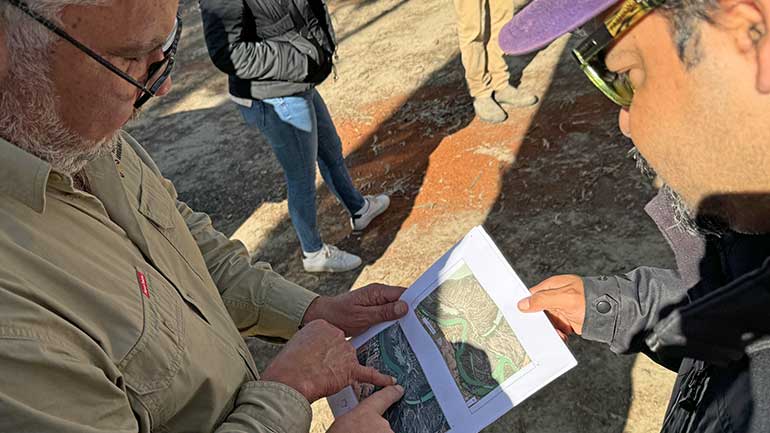The project is co-funded by the Murray–Darling Basin Authority (MDBA) and delivered by the Victorian Fisheries Authority (VFA) in partnership with First Nations people, and in collaboration with catchment management authorities, water authorities including environmental water holders and local communities.
MDBA General Manager Science Acquisition, Matthew Coleman, said the project is an innovative approach to test whether, native fish nurseries in the selected wetlands can lead to increased survival rates of juvenile fish when returned instream.
“The work delivered by the VFA aims to enhance local fish communities on Country by using natural waterways that better resemble the native fish habitat, and to monitor the growth and movement of native fish,” Mr Coleman said.
“Developing the knowledge base for native fish recovery is vital to achieving environmental outcomes under the Basin Plan and this project will help us better understand how native fish respond to different management efforts.
“The funding provided by the MDBA via the Murray–Darling Water and Environment Research Program (MD-WERP) is backing new research like the trial delivered here in Sunraysia, and can enhance our understanding of how native fish move through the Basin.”
Photos from recent site visits
First People of the Millewa-Mallee Aboriginal Corporation (FPMMAC) officer Michael Gilby, said the project was delivering community-based fisheries management on Country through citizen science.
“I was thrilled to be out on Country earlier this year to officially kick start the research trial,” Mr Gilby said.
“Our research team and partners from the First People of Millewa-Mallee Aboriginal Corporation visited potential sites across Sunraysia including Cowanna and Brickworks Billabongs in Merbein, Ducks Foot Lagoon in Nichols Point, and Belar Nursery in Irymple.
“We still need to work through all the details with other agencies, but the plan is to stock and grow hatchery reared golden perch and silver perch larvae in three selected wetlands applying cultural-based fishery knowledge to monitor, capture and safely release the grown adult fish, in collaboration with scientists.
“The fish will be tagged and liberated into adjoining waterways to rebuild native fish populations on Country.
“It’s a project that combines both traditional and non-traditional fisheries knowledge and understanding, to allow fish to move through the Basin.”
VFA CEO Travis Dowling said insights from the project could be applied at the Arcadia native fish hatchery and Snobs Creek hatchery, where millions of native fish are produced each year.
“We’re proud to be leading this collaborative project which mimics natural cycles that have been occurring for thousands of years,” he said.
“The initiative will complement our record-breaking stocking program by releasing the adult fish grown in these wetland systems back into connecting waterways across northern Victoria.”
This project is supported through funding from the Australian Government Murray–Darling Water and Environment Research Program (MD-WERP). MD-WERP is a $20 million, 4-year Australian Government initiative to strengthen scientific knowledge of the Murray–Darling Basin.
This project has been funded by the Murray–Darling Basin Authority under the short-term tactical projects scope designed to assist the Australian Government in addressing Basin Plan objectives and responding to emerging issues.
The project has also received $90,000 in kind contributions, from the Victorian Fisheries Authority and staff resources from various Catchment Management Authorities, including the Sunraysia based Mallee Catchment Management Authority.
Contact the MDBA media office at media@mdba.gov.au or 02 6279 0141
Contact VFA Media joel.peterson@vfa.vic.gov.au or 0436 623 647
Facebook: facebook.com/MDBAuth


